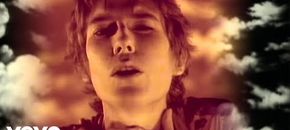Kimberly Austin
Kimberly Austin
Profile of a local artist
Kimberly Austin is one of San Francisco’s undiscovered treasures. Although her art resides in important international public and private collections – including Germany’s Gelsenkirchen Museum, the Levinthal collection, Deloitte & Touche, and that of Jane’s Addiction founder Perry Farrell – and she shows regularly at San Francisco’s Braunstein Quay Gallery and Cologne’s Galerie Sieppel, the 38-year-old Austin remains relatively unknown. What makes her lack of large-scale recognition all the more puzzling is that her photography-based work is among the most ethereally beautiful, as well as psychologically, emotionally, and historically provocative stuff being made today.
To follow the arc of Austin’s work is to watch the unfolding of a specific if hard to pin-down vision- one that continues to evolve from series to series while retaining a highly personal feeling. Her early work, 1989-1992’s Brides, Portraits, and Nudes, was influenced by vintage family photographs and touched on traditional Christian conceptions of femininity. Printed on flowing silk panels, these life-size original black and white photographs, many of them “self-portraits,” in that Austin served as her own model, have an almost 19th-century quality to them, one that’s at once dream-like and eerily palpable. They’re calm, yet violent. One of the nudes stands naked, pressing a large knife against the white of her abdomen, while the Brides exhibit an almost ghostly sadness, as if resigning themselves to a fate unwanted.
Her latest series, Adam and Edna is her most mature and beautiful work to date. The idea for Adam and Edna sprang from her grandfather’s death. While engaged in the routine task of organizing his papers and possessions, Austin’s mother came across a box containing immigration documents, family photographs, information relating to her parents’ divorce, and a series of letters documenting their volatile marriage.
Spanning the period from 1939-1958, these randomly stored correspondences, which Austin took upon herself to read and reread in order to determine the chronology, tell the story of the romantic, restless, sexually freewheeling, and almost willfully self-destructive Edna, the various men in her life, and the long, and ultimately fruitless endeavor of Adam to reign in his wandering wife and bring stability to his family.
It was perhaps inevitable that Kim Austin should find this flip side of American Gothic woven into the fabric of her family history, because the underlining themes of Adam and Edna’s story are the stuff that Kim has always explored through her art-namely, the roles of the sexes in society, and our ever-changing perceptions of them. Brides, Portraits, and Nudes led to Aphrodisia, a series of works exploring androgyny and societal ideas of “gender correctness.” 1996’s Contra Natura, a set of eleven triptychs, juxtaposed images of boys and girls with everyday objects in an effort to examine how, say, a gun, a perfume bottle, a watch, a ring, help to shape sexual ideas and identities. 1997’s Learning Normalcy consists of 26 jumbo alphabet blocks, which, in addition to letters, allows images and texts to be rearranged for varying interpretations on the “normal” development of mind and body. 2000’s How To Live series continued the topic through repeated images of toys, dolls, and miniatures with texts drawn from early 20th-century books on social skills, hygiene, marriage, and child rearing.
With Adam and Edna, a tale unfolds of a sexually uninhibited young woman growing up in 1930’s California, and the devastating effect her actions had on her family. In a recent interview, Austin explained that she sees parallels between Adam & Edna and the iconographic roles of Adam and Eve, with Eve destroying her paradise: “The first impression is to blame her [Edna] – how awful she was and how she screwed everything up. But starting with a letter in 1941, you get a different insight. How in some way she was a victim of the time, the choices available to her, and how she might not have hurt so many people.”
On the gallery walls, the ballad of Adam and Edna unfolds in three phases: (1) The Dating Years. (2) The 1941 Separation Letters. (3) Separations / Travels / On-Going Traumas. Phase two is arguably the most nakedly emotional, because it outlines Edna’s journey, her views on love, marriage, kids, and how she wanted to see her life played out. Her dreams never materialized. Edna remained unable to resolve her conflicts of living a mother’s role.
Kimberly Austin’s next local exhibition will be at the Braunstein Quay Gallery from September 2nd to October 4th.
For more information about Kimberly Austin, visit her website at kimberlyaustin.net or e-mail [email protected].
For more information about other upcoming exhibitions at the Braunstein Quay Gallery.





